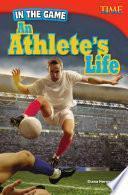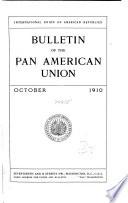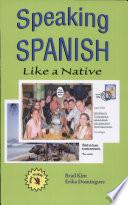
The Game
Autor: Sara Beltrame
Número de Páginas: 120La adaptación del último libro de Baricco. Un viaje divertido y educativo para conocer y saber orientarse en la jungla de la red.

La adaptación del último libro de Baricco. Un viaje divertido y educativo para conocer y saber orientarse en la jungla de la red.

Do you have what it takes to be an athlete? In this Spanish-translated nonfiction book, readers learn about the hard work, athletic training, and dedication that athletes from all sports and levels go through to be healthy and successful. Readers are familiarized with concepts like coordination, endurance, and athletic motivation. Along with stunning photos and charts and riveting facts, this nonfiction title includes an interview with a real-life Olympic athlete and an accessible glossary, index, and list of useful sources. This 6-Pack includes six copies of this title and a lesson plan.

Using Games as a Methodology for Observing the Observer constructs a methodology of active learning for observing the observer. The tool used is the construction of games. The basic questions are: What actions can be taken to allow the subject to observe him or herself? and How can learning activities be used to reconstruct the subject's experience during the observation? The basic reference framework for the qualitative research is constructivism. The conceptual and philosophical analysis of research is second-order cybernetics that gives relevance to the theory of the observer and to the relationship between the observer and what is observed. Games are the constitutive elements of a space of action wherein a world emerges. For the construction of the games the group is organised according to specific structures, which make up a work network within the proposed experimental scenario.Every reflexive discourse (conceptual, informational and descriptive) on the describer's properties system will be formed, at least, of the perspectives, dispositions and distinctions in the language of the observer. In this sense, to observe the observer does not constitute a representation of...


Have you ever heard of The Excited Burro or Ringel Ringel? These are games that children play in other countries. Children play different games in different parts of the world, but they all have fun! Vibrant photos, diagrams, maps, informational text, and interesting facts invite readers to learn the way children around the world play the same games as they do in this delightful, Spanish-translated nonfiction title. This 6-Pack includes six copies of this title and a lesson plan.

🇪🇸Spanish 🇬🇧English 🇵🇹Portugues *UNOFFICIAL GUIDE* 🇬🇧 This is the most complete and detailed guide you will find online. Instant download on your phone, eBook or paperback. This guide contains advanced tips on how to progress in the game, and much more! ~ Strategies and professional advice. ~ Secret tips, hacks, tricks rewards used by the most PRO players! ~ How to get amounts of money / coins. ~ There is no other guide like this, where the points with screen impressions are shown to help you progress in the game. 🇪🇸 Esta es la guía más completa y detallada que encontrarás en línea. Descarga instantánea en su teléfono, libro electrónico o libro de bolsillo. ¡Esta guía contiene consejos avanzados sobre cómo progresar en el juego, vencer a tus oponentes, y mucho más! ~ Estrategias y asesoramiento profesional. ~ ¡Consejos secretos, trucos, recompensas de trucos utilizados por los jugadores más PRO! ~ Cómo obtener cantidades de dinero / monedas. ~ No hay otra guía como esta, donde se muestran los puntos con impresiones de pantalla para ayudarte a progresar en el juego. 🇵🇹 Este é o guia mais completo e detalhado que você encontrará...










Inhalt: Burton M. Leiser: Preface Elspeth Attwooll / Annette Brockmoller: Preface Rafael Encinas de Munagorri: Les Problemes de preuve poses par l'evolution des sciences et des technologies Richard A. L. Gambitta / Gary S. Kitchen: Genetic Engineering and the Law Mariachiara Tallacchini: The Patentability of Human Biological Materials Joan C. Callahan: Liberalism, Reproductive Technologies, and Feminist Skepticism Gerry Maher: Future Trends in Computer-Generated Pornography: Ethical Principle and Legal Regulation of oBespokeo Pornography Fernando Galindo: La puesta en practica de la regulacion de Internet por la Filosofia del Derecho comunicativa Richard T. De George: Business Ethics and The International Legal Coordination Problem Takao Katsuragi: On Multi-Value Structure or Market Ethics Francois Ost / Mark van Hoecke: From contract to transmission Robert Isaak: Philosophical Bases of oGreen Logico.



Subject Stages argues that the discourses and practices of marital legislation, litigation, and theatrics informed each other in early modern Spain in ways that still have a critical bearing on contemporary events in Spain, such as the legalization of divorce in 1978 and of same-sex marriage in 2005.






La guía definitiva para conocer los lugares históricos del rock de la Ciudad de Buenos Aires: más de cien recorridos por casas, estudios de grabación, plazas, bares, estadios y teatros donde se creó el rock argentino. Los primeros rockeros argentinos tomaron la música que llegaba de Estados Unidos y, fundamentalmente, de Inglaterra para moldear un sonido propio -y un mensaje claro y único a partir de componer las letras en su idioma-, que convirtió a Buenos Aires, década tras década, en la ciudad de habla hispana más importante del movimiento. Esta guía conduce a más de cien lugares en los que se desarrolló y vibra la historia del rock argentino: casas, estudios de grabación, plazas, bares, estadios, teatros, donde se compusieron canciones inmortales, se grabaron discos eternos, se formaron bandas legendarias o se produjeron actuaciones inolvidables. ¿En qué lugar de Buenos Aires Patricio Rey y sus Redonditos de Ricota presentaron Oktubre? ¿Dónde hizo su primer show Soda Stereo? ¿En qué espacio mítico Tanguito compuso "La balsa"? ¿Cómo ubicar los escenarios de los recitales más emblemáticos de Charly García? ¿Dónde queda el que fue el bar favorito de...



Spanish is an important source for terms and expressions that have made their way into the English of the southwestern United States. Vocabulario Vaquero/Cowboy Talk is the first book to list all Spanish-language terms pertaining to two important activities in the American West-ranching and cowboying-with special reference to American Indian terms that have come through Spanish. In addition to presenting the most accurate definitions available, this A-to-Z lexicon traces the etymology of words and critically reviews and assesses the specialized English sources for each entry. It is the only dictionary of its kind to reference Spanish sources. The scholarly treatment of this volume makes it an essential addition to the libraries of linguists and historians interested in Spanish/English contact in the American West. Western enthusiasts of all backgrounds will find accessible entries full of invaluable information. Robert N. Smead is Associate Professor of Linguistics in the Department of Spanish and Portuguese at Brigham Young University. Ronald Kil is a New Mexico cowboy and artist who has worked on ranches and feedlots all over the West. Richard W. Slatta is Professor of History...



Esta obra contribuye al homenaje que la Universitat de València rindió al profesor Amartya Kumar Sen con motivo de su investidura como Doctor Honoris Causa. La cuidada selección de artículos preparada por el profesor Casas Pardo, precedida de un estudio introductorio sobre su obra, recoge las aportaciones más importantes, originales y creativas del Dr. Sen a la economía, la ética y al pensamiento social en general.





An expert on early childhood education offers an important resource for Hispanic parents who try to maintain respect for cultural traditions while readying their children for success in the world, discussing history, customs, and responsibilities. Original.

Unlike other vocabulary guides that require the rote memorization of literally thousands of words, this book starts from the premise that using the etymological connections between Spanish and English words—their common derivations from Latin, Greek, and other languages—is the most effective way to acquire and remember vocabulary. This approach is suitable for beginners as well as for advanced students. Teachers of the language will also find much material that can be used to help motivate their students to acquire, and retain, Spanish vocabulary. Spanish Vocabulary is divided into four parts and four annexes: Part I provides background material on the origins of Spanish and begins the process of presenting Spanish vocabulary.Part II presents "classical" Spanish vocabulary—words whose form (in both Spanish and English) is nearly unchanged from Latin and Greek.Part III deals with "popular" Spanish vocabulary, which underwent significant changes in form (and often meaning) during the evolution from Latin to Spanish. A number of linguistic patterns are identified that will help learners recognize and remember new vocabulary.Part IV treats a wide range of themes, including words ...

This handbook and accompanying CD have been designed to help dentists, dental hygienists, and other dental personnel communicate with Spanish-speaking patients. Intended for novice learners as well as those who need to polish their rusty high school Spanish,Paso a Pasocan be used in emergency situations or as a source of phrases to make routine visits more comfortable for patients--or anywhere between those extremes. The book includes aspects of Latino culture vital for any dental professional as well as key dental health phrases and useful grammar.Paso a Pasofocuses on learning, practicing, and speaking both standard and colloquial Spanish for an office setting. The accompanying CD presents dialogues in which Latino patients interact with health professionals using a variety of accents and levels of fluency. Like the book, the CD will be useful in workshops, work-site training, and individual learning. The chapter structure permits work-site training of an hour a day for six weeks. The CD will not be sold separately. FromPaso a Paso/Step by Step, Chapter Two "In Latin America, more than one last name is used to describe family relationships. Latino names consist of a first and...


Ver Opciones